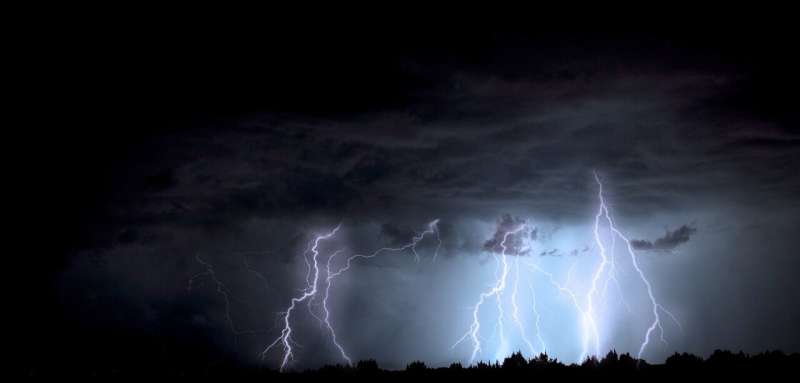Study of extreme Indian rainfall upends conventional wisdom

Lisa Lock
scientific editor

Robert Egan
associate editor

A new study in the journal Science, led by scientists at the City College of New York (CCNY) and Columbia University, challenges long-held beliefs about how El Ni帽o events influence rainfall during the Indian summer monsoon. The findings show that while El Ni帽o often brings drought conditions to India overall, it also increases the likelihood of devastating downpours in some of the country's most heavily populated regions.
"Our key finding is that you tend to get more days with extreme amounts of rainfall within India, not less, during El Ni帽o summers," says lead author Spencer Hill, a professor at CCNY and an affiliate at the Lamont-Doherty Earth Observatory, which is part of the Columbia Climate School.
"This result was unexpected, because we've known for over a century that El Ni帽o events do precisely the opposite for total rainfall summed over the rainy season, June through September."
The research team combined more than a century of rainfall observations with high-resolution rainfall datasets and advanced atmospheric diagnostics to uncover this paradoxical effect of El Ni帽o.
"One key advance of our study's approach is that, even though it deals with rare events, it allows robust differences to emerge without lumping all the data into a single 'Indian rainfall' bucket," says co-author Michela Biasutti. "By doing so, we were able to see changes of the opposite sign in the rainiest and driest regions of the subcontinent."
The increases in extreme daily rainfall under El Ni帽o compared to La Ni帽a are concentrated in central India and in the southwestern coastal band, Hill says. "In the southeast and northwest, however, the signal is opposite, meaning daily extreme rainfall is less likely in El Ni帽o summers."
In India, floods and other extreme weather events cause widespread and severe impacts every year. In , they killed more than 3,000 people, destroyed or damaged 230,000 homes and buildings and killed nearly 10,000 head of livestock.

The study's findings also point to opportunities for improving seasonal forecasts. Advance warning could help officials better prepare for disasters by issuing flood alerts sooner, pre-positioning emergency relief supplies or strengthening vulnerable infrastructure.
"Our results open the door to creating seasonal outlooks for extreme events in India, based on the slowly evolving temperature of the ocean," says Biasutti. "This study focused on uncovering the effects of ENSO, but the same physical mechanisms might apply to other modes of natural variability. They might also be relevant to understanding anthropogenic changes in rainfall extremes."
ENSO, which stands for El Ni帽o-Southern Oscillation, is scientists' preferred name for the climate phenomenon that encompasses both El Ni帽o and La Ni帽a phases.
In the 1980s, Lamont's Mark Cane, who was also an author on this study, co-developed the world's first model of El Ni帽o, laying the foundation for today's seasonal climate forecasting.
Hill says the team's work will continue, thanks to a new three-year grant by the National Science Foundation.
"We will investigate how and why the type of storms responsible for much of this extreme rainfall, called monsoon low-pressure systems, change depending on whether there are El Ni帽o or La Ni帽a conditions," he says.
In addition to researchers from CCNY and LDEO, the study team included scientists from Columbia's Department of Applied 糖心视频ics and Applied Mathematics and from the University of California, Los Angeles.
More information: Spencer A. Hill et al, More extreme Indian monsoon rainfall in El Ni帽o summers, Science (2025).
Journal information: Science
Provided by Earth Institute at Columbia University
This story is republished courtesy of Earth Institute, Columbia University .





















